How to warm up for fencing
2 Comments“We want faster, cleverer and more independent fencers”
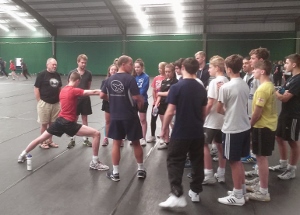 an aspirational goal discussed by SW Fencing hub coaches last week. Part of my role is to teach them how to do specific fencing warm up.
an aspirational goal discussed by SW Fencing hub coaches last week. Part of my role is to teach them how to do specific fencing warm up.
I was fortunate enough to be working on 2 great fencing camps last week: Norman Golding’s summer course at Millfield School and James and Ian Williams’ sabre camp in Grantham.
The above quote came from many conversations I had with some great individuals over the course of the 7 days on camp.
How to start your fencing warm-up
I had a simple aim for the 4 days I was on Norman’s summer camp: get the fencers to walk away with 2 warm-ups that they could utilise at their home salles.
I have failed miserably as a coach to get my athletes to do a fencing warm up consistently and well in my absence. As soon as they get to a competition, all planned routines seem to disappear.
I have been researching extensively latest thoughts on injury prevention in warm-ups, as well as discussing with coaches about how they work in practice. I have also added what works with the fencers I coach.
The principle is to warm up through stages:
General: (just got out of the car or classroom) Get the hips and T-spine moving, followed by a sideways, forwards and back gross motor pattern. Then do some work in prone to warm the shoulders up as well as coordinate arms and legs.
Related: Introduce single leg balance and control, followed by explosive movement from there and a braking action. Jumping work: single jumps with controlled landings and then reactive jumps. Followed by acceleration starts, and then a running action using spatial awareness.
Specific: By this stage, they are moving faster, have sweated and have been up, down, forward, back and sideways. They can then pick up their swords and start to rehearse footwork and tactics.
Each fencer went away with a written handout on these warm-ups. It took a good 90 minutes of coaching to get each one right (or at least in the right direction).
Here they are on video.
Thanks to all the fencers and coaches for helping me on the course: great feedback and interaction.
Further reading:


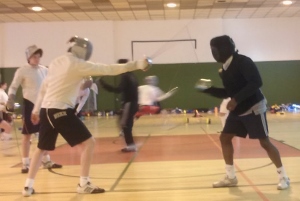 It was good to be back on the James and Ian Williams’ sabre camp in Grantham, working with very experienced coaches, Army PTIs and an excellent physiologist (Leo Faulmann).
It was good to be back on the James and Ian Williams’ sabre camp in Grantham, working with very experienced coaches, Army PTIs and an excellent physiologist (Leo Faulmann). 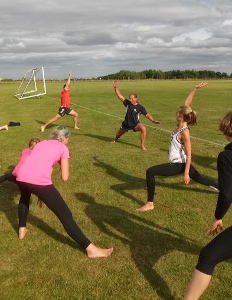 My approach was to show them how to jump, land and then explode again with 2 legs, then with 1 leg. Vertically, linearly and laterally. Once the fundamentals are in place, then it is just a matter of working on co-ordination and timing to be able to apply it all.
My approach was to show them how to jump, land and then explode again with 2 legs, then with 1 leg. Vertically, linearly and laterally. Once the fundamentals are in place, then it is just a matter of working on co-ordination and timing to be able to apply it all.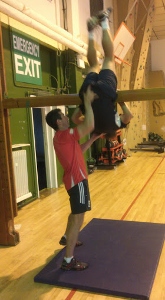 I also had the chance to share many gymnastics ideas with Steve Chappell which was beneficial to me. Leo Faulmann was a goldmine of information and knowledge having worked with fencers for 25 years. That will prove very useful for fencers I work with at the SW fencing hub.
I also had the chance to share many gymnastics ideas with Steve Chappell which was beneficial to me. Leo Faulmann was a goldmine of information and knowledge having worked with fencers for 25 years. That will prove very useful for fencers I work with at the SW fencing hub.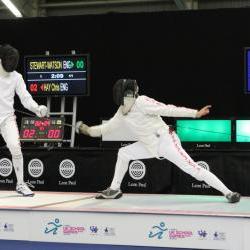
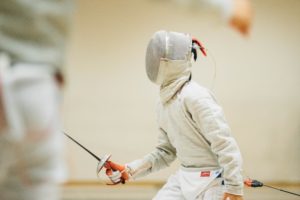
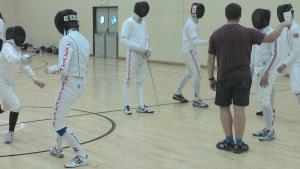 Sunday saw our 3rd training day of the
Sunday saw our 3rd training day of the 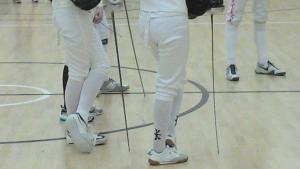 Despite my best efforts, the fencers kept returning to their horrible standing postures. We have worked hard on
Despite my best efforts, the fencers kept returning to their horrible standing postures. We have worked hard on 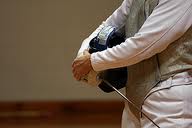 We are currently working with the South West Junior Fencing Hub introducing and developing fitness protocols. The first session was an
We are currently working with the South West Junior Fencing Hub introducing and developing fitness protocols. The first session was an  As James mentioned
As James mentioned 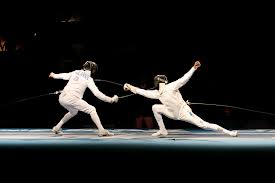 As a novice with regards to fencing, all the coaches on the day were very generous and took a lot of time to explain the differences between the different disciplines (was quite a lot to take in).
As a novice with regards to fencing, all the coaches on the day were very generous and took a lot of time to explain the differences between the different disciplines (was quite a lot to take in).